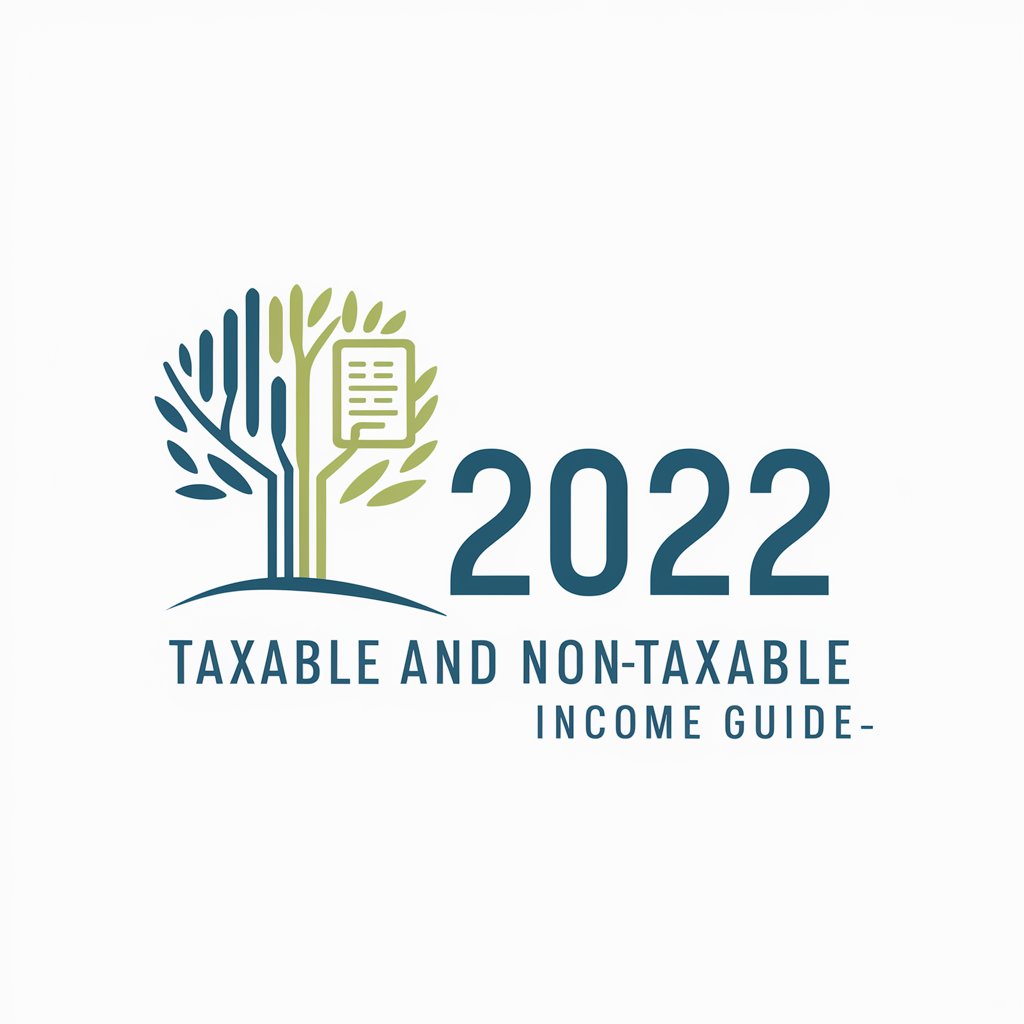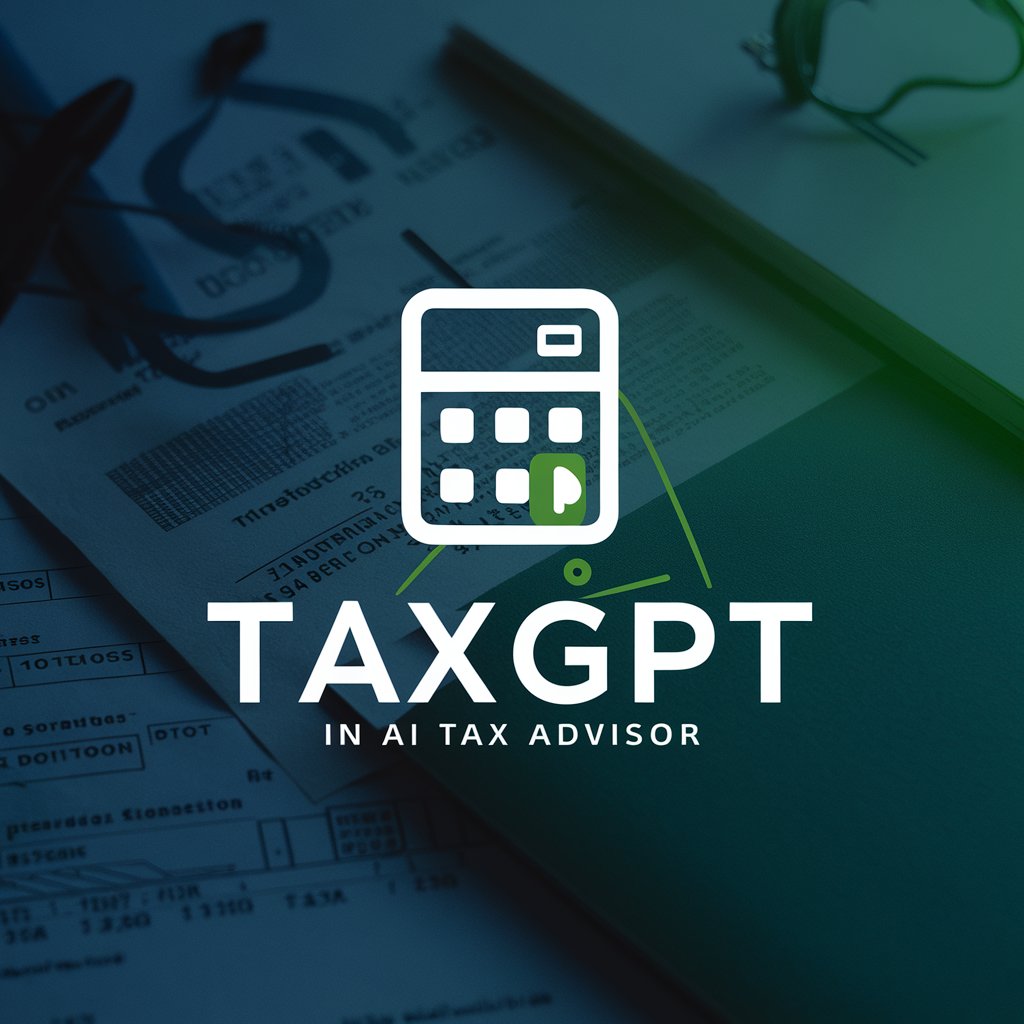2022 Taxable and Nontaxable Income Guide - Tax Income Guide Insight

Welcome! How can I assist you with IRS Publication 525 today?
Navigating Your Taxable and Nontaxable Income with AI
Explain the differences between taxable and nontaxable income as outlined in IRS Publication 525.
How should one report employee compensation on their tax return according to Publication 525?
What are the tax implications of fringe benefits according to IRS guidelines?
Describe the treatment of stock options under IRS rules for taxable and nontaxable income.
Get Embed Code
Overview of the 2022 Taxable and Nontaxable Income Guide
The 2022 Taxable and Nontaxable Income Guide is designed to assist individuals in understanding the distinctions between taxable and nontaxable income as defined by the IRS for the year 2022. It covers a wide range of income types, from employee compensation, retirement plan contributions, and fringe benefits to business and investment income, and provides detailed explanations on how each is treated for tax purposes. For example, it clarifies how employer contributions to retirement plans are not included in income at the time contributed, while emphasizing the tax implications of fringe benefits like employer-provided vehicles. Powered by ChatGPT-4o。

Key Functions and Real-world Applications
Distinguishing Between Taxable and Nontaxable Income
Example
Identifying if employer-provided health insurance benefits are taxable
Scenario
An employee receives health insurance through their employer. The guide helps them understand that these benefits are generally not taxable income, except under specific conditions such as coverage exceeding certain limits.
Explaining Tax Implications of Various Fringe Benefits
Example
Clarifying the tax treatment of personal use of a company car
Scenario
A sales representative is provided with a company car that they also use for personal errands. The guide offers insight into how to calculate the taxable portion of this fringe benefit based on IRS guidelines.
Guidance on Employer Retirement Plan Contributions
Example
Understanding the tax treatment of elective deferrals in a 401(k) plan
Scenario
A new employee decides to contribute a portion of their salary to a 401(k) plan. The guide explains the tax benefits of such elective deferrals and the annual limits imposed by the IRS.
Target User Groups for the Guide
Employees with Various Benefits
Individuals who receive fringe benefits, retirement plan contributions, or participate in employer-provided health plans will find the guide invaluable for understanding the tax implications of these benefits.
Individuals Receiving Miscellaneous Income
People involved in non-traditional earning activities such as gig work, freelancing, or receiving royalties can use the guide to determine which portions of their income are taxable.
Tax Professionals and Financial Advisors
Professionals assisting clients with tax preparation or financial planning can use the guide as a reference to provide accurate advice on taxable and nontaxable income types.

How to Use the 2022 Taxable and Nontaxable Income Guide
Begin with a trial
Start by accessing yeschat.ai for a complimentary trial, enabling you to explore the guide without the need for ChatGPT Plus or signing in.
Review Publication 525
Familiarize yourself with IRS Publication 525 to understand the distinctions between taxable and nontaxable income.
Identify your needs
Determine the specific sections of the publication that relate to your income situation, such as employee compensation, business and investment income, or miscellaneous income.
Apply the information
Use the detailed explanations and examples provided in the guide to apply to your own tax scenarios, ensuring accurate reporting of taxable and nontaxable items.
Seek clarification
If you encounter complex scenarios or need further explanation, use the guide's structure to ask precise questions for tailored advice and clarifications.
Try other advanced and practical GPTs
TaxGPT
AI-powered Tax Expertise at Your Fingertips

Hogwarts Character Crafter
Craft Your Unique Hogwarts Character

Wallpaper Buddy
Personalize your screen with AI-powered art

CTS Risk & Audit Assistant
Navigate CTS challenges with AI-driven guidance.

Costa Rica Nicoya Peninsula Blue Zone Chef
Discovering longevity through tradition.

Quiz Master
Empowering learning with AI-driven quizzes

Cryptozoology Companion
Exploring the Unknown, Powered by AI

Sasquatch Scholar
Unraveling Bigfoot Mysteries with AI

Reels Bot
Elevate Your Reels with AI Insight

Reels Wiz
Craft Engaging Reels Instantly with AI

Asistente de Reels
Elevate Your Reels with AI-Powered Inspiration

Script Reels
Elevate Your Reels with AI-Driven Scripts

Frequently Asked Questions About the 2022 Taxable and Nontaxable Income Guide
What is considered taxable income under the 2022 guide?
Taxable income includes wages, salaries, bonuses, and tips, as well as investment income and certain benefits like unemployment benefits and nonqualified deferred compensation.
Can employer-provided benefits be nontaxable?
Yes, certain employer-provided benefits are nontaxable, such as health insurance, educational assistance up to $5,250, and employer contributions to a retirement plan.
How are stock options taxed according to the guide?
Stock options are taxed differently based on their type. Nonstatutory stock options are taxable at the time of exercise, while statutory stock options are not taxable upon grant or exercise but are taxable when sold.
What are the tax implications for cancelled debts?
Cancelled debts are generally considered taxable income unless specifically excluded by law, such as in the case of bankruptcy or if the debt is a qualified principal residence indebtedness.
How does the guide address cryptocurrency transactions?
The guide clarifies that virtual currency transactions are taxable by the IRS and must be reported as income based on the fair market value of the cryptocurrency at the time of receipt or successful mining.
